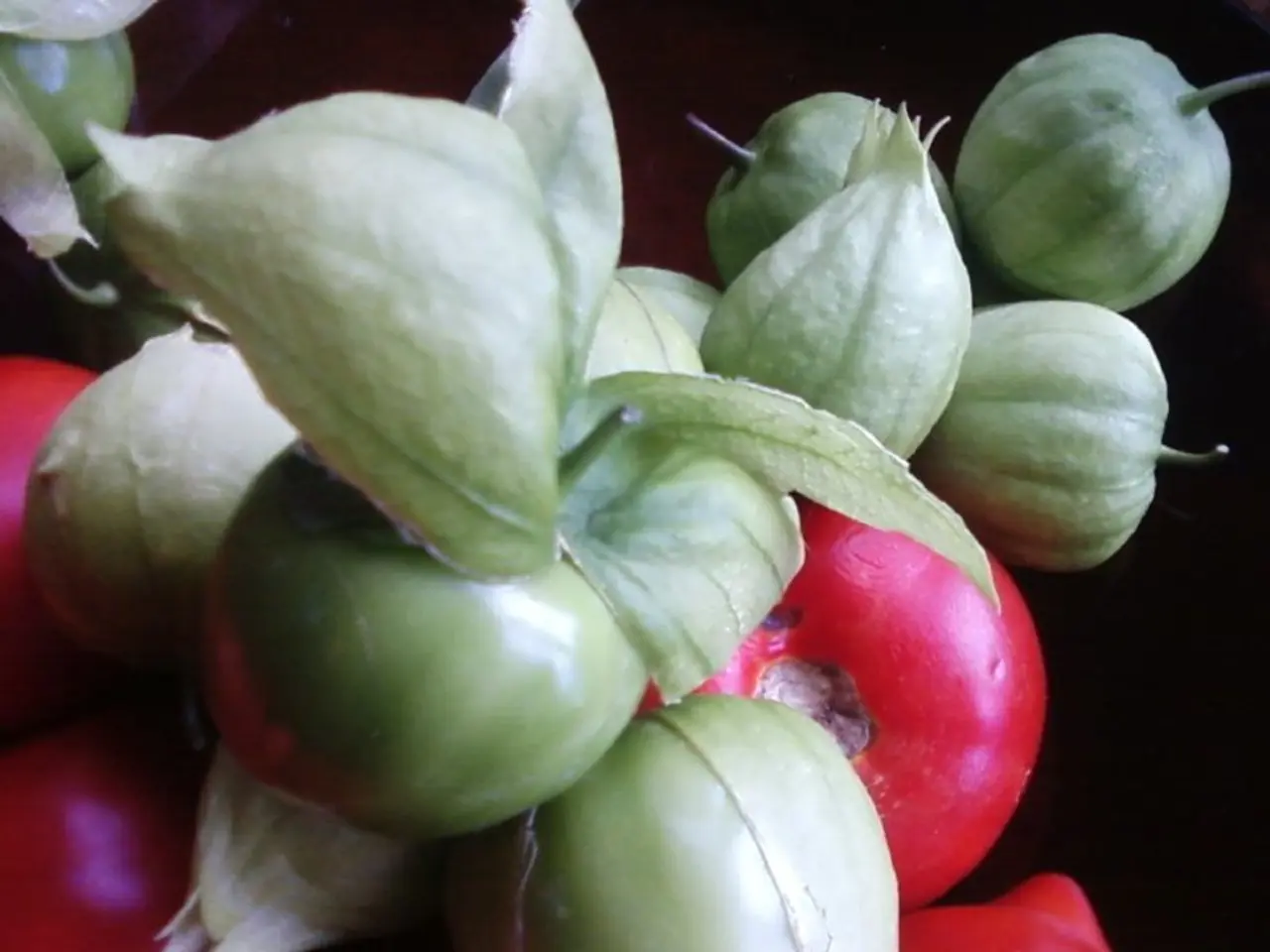March is the ideal time to cultivate edible plants
In the warming days of spring, it's time to get your hands dirty and start sowing seeds outdoors for a bountiful harvest of carrots, beetroot, salad leaves, and spring onions. Here's a step-by-step guide to help you get started.
1. **Choose the Right Time and Conditions:** Sow cool-season crops like carrots, beetroot, salad leaves, and spring onions when the soil is workable and has warmed sufficiently, typically in early spring or according to your last frost date. Soil temperatures ideally should be above 45°F (7°C) for root crops like carrots and beetroot. For continuous harvests of salad leaves, re-sow every few weeks to maintain a steady supply.
2. **Prepare the Soil:** Remove weeds and debris from the area, then loosen the soil well, incorporating ¼ to 1 inch of compost and a balanced fertiliser into the top 8-12 inches. This will improve fertility and drainage, which is critical for root crops. Rake the bed to create a smooth, fine seedbed for good seed-to-soil contact.
3. **Sowing the Seeds:** Plant seeds directly where you want the plants to mature because root crops like carrots and beetroot do not transplant well. Sow seeds thinly in shallow drills (about 1/4 to 1/2 inch deep) for carrot and beetroot, and scatter seeds thinly on the surface or in rows for salad leaves and spring onions, covering lightly with soil or vermiculite to maintain moisture.
4. **Thin Seedlings:** Once seedlings emerge, thin them carefully to avoid crowding, allowing the strongest plants to develop fully. For carrots and beetroot, thin to 2-3 inches apart. For salad leaves, spacing depends on the variety but usually 4-6 inches is good.
5. **Water Gently and Consistently:** Keep the soil moist but not waterlogged during germination. Water regularly, especially in dry weather, to encourage steady growth.
When it comes to potatoes, it's time to plant the first early varieties in the last couple of weeks in March. Make a V-shaped drill 2cm deep with the edge of a hoe, then dig out a 10-15cm deep trench or plant them into holes about 10cm deep when using raised beds. Space the potatoes about 30cm apart and have the chits or small shoots facing up. Cover the tubers back over with soil.
For rhubarb, it's a time for abundant harvests. To pull it, grip the stem down near the base and give it a firm twist to pull it away from the crown cleanly. Tomato plants are moved to the next stage of growth in 9cm pots filled with a mix of peat-free potting compost and John Innes no 3. The seedlings are placed out on the bench after a good soak, and if the seedling is leggy, drop it right down deep into the hole so that the leaves are close to the surface.
Soaking the bottom of the drill with water before sowing seeds is recommended, and it's advised to water if it's very dry a few days after sowing. Roots will grow on the buried stem and this bonus growth makes the plant stronger. Stop harvesting from young plants by the summer to give them a chance to recover and strengthen for longer picking next year.
In summary, direct sow seeds of carrots, beetroot, salad leaves, and spring onions outdoors when soil is warm enough, prepare and enrich soil well, plant seeds shallowly and thinly in place, keep soil moist, and thin seedlings after germination for proper growth. This direct sowing approach suits these crops since they tolerate being planted in their final location and avoid potential root disturbance from transplanting. Happy planting!
- To improve your home-and-garden lifestyle and enhance your gardening skills, consider creating raised beds and direct sow seeds of cool-season crops like carrots, beetroot, salad leaves, and spring onions when the soil is warm enough.
- By following a step-by-step guide that incorporates proper timing, soil preparation, sowing techniques, seedling thinning, and consistent watering, even beginners can grow their own vegetables in raised beds, contributing to a healthier and more self-reliant lifestyle.




